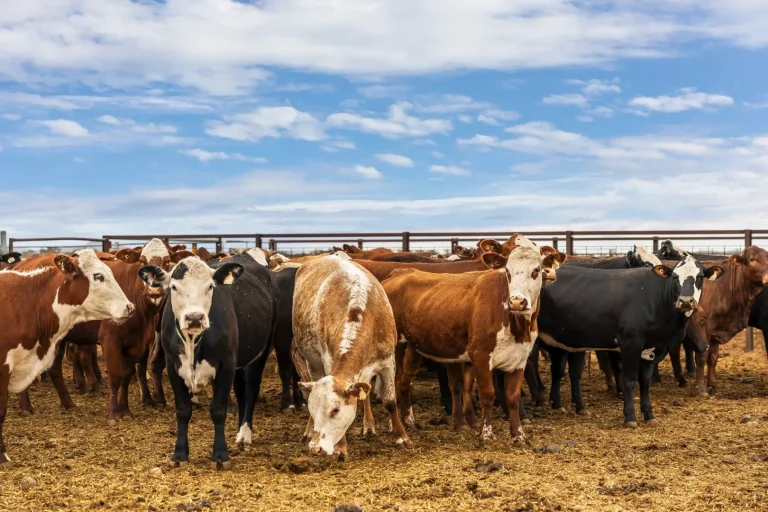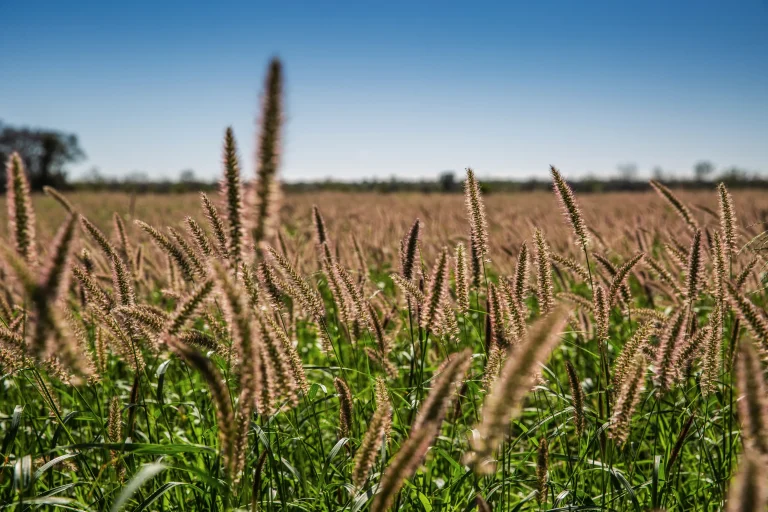Methods for Appraising Livestock Farming Infrastructure: Professional Valuation Guide
Livestock farming infrastructure represents substantial asset values that require sophisticated appraisal methodologies encompassing replacement cost analysis, depreciation assessment, and income-generating capacity evaluation across diverse agricultural enterprises and regional markets. Understanding comprehensive methods for appraising livestock farming infrastructure becomes essential for property owners, investors, lenders, and professional valuers involved in agricultural asset assessment, insurance valuations, and transaction support throughout the livestock sector. At Agribusiness Horizons, we employ specialized infrastructure appraisal techniques that combine engineering assessment, agricultural economics expertise, and market intelligence to provide accurate valuations that reflect true asset values and operational contributions within livestock enterprises. This guide examines the professional methodologies used to assess livestock infrastructure values across different agricultural systems and property types throughout Australia’s diverse livestock regions.
The complexity of livestock infrastructure appraisal requires understanding of construction methods, operational functionality, regulatory compliance, and technological evolution that influence asset values and depreciation patterns across different livestock enterprises and geographic regions throughout Australia’s extensive agricultural landscape.
Infrastructure Classification and Assessment Framework
Livestock farming infrastructure encompasses diverse asset categories requiring specialized appraisal approaches that recognize unique characteristics, functional requirements, and value contributions within different agricultural enterprises and operational systems.
Livestock housing facilities include cattle sheds, sheep yards, dairy parlors, and specialized animal housing that provide operational capacity while requiring assessment of construction quality, functional adequacy, and compliance with current animal welfare standards.
Handling systems encompass yards, races, crushes, and loading facilities that enable efficient livestock management while requiring evaluation of design adequacy, safety compliance, and operational efficiency that determine asset values and operational contributions.
Water infrastructure covers bore systems, dams, troughs, and reticulation networks that provide essential livestock requirements while requiring assessment of capacity, reliability, and compliance with water management regulations that affect operational sustainability.
Fencing systems include boundary fencing, internal paddock divisions, and specialized containment facilities that provide operational control while requiring assessment of materials, condition, and compliance with livestock management requirements.
Feed storage and handling facilities encompass silos, sheds, and distribution systems that support livestock nutrition while requiring evaluation of capacity, condition, and efficiency that determine operational value and competitive positioning.
Processing and value-added infrastructure includes abattoirs, dairy facilities, and wool handling systems that provide revenue enhancement while requiring assessment of throughput capacity, compliance status, and market positioning that influence asset values.
Replacement Cost Methodology
Replacement cost valuation represents the fundamental approach for assessing livestock infrastructure values through detailed analysis of current construction costs, materials, and specialized requirements that establish baseline asset values for insurance and transaction purposes.
Current construction cost analysis evaluates modern building materials, specialized equipment, and construction methods while accounting for regional variations and specialist contractor availability that influence replacement cost calculations across different Australian livestock regions.
Engineering specifications and design standards determine construction requirements while ensuring compliance with current building codes, animal welfare standards, and biosecurity requirements that affect replacement cost accuracy and asset valuation.
Professional quantity surveying provides detailed cost breakdowns while ensuring accurate material quantities and construction complexity assessment that supports reliable replacement cost calculations for complex livestock infrastructure projects.
Specialized equipment integration encompasses livestock handling equipment, milking systems, and processing machinery that require specialized knowledge and current pricing information for accurate replacement cost assessment and valuation.
Regional cost variations reflect different material availability, specialized contractor access, and transportation costs while requiring local knowledge and market intelligence for accurate replacement cost assessment across diverse Australian livestock regions.
Modern compliance standards ensure replacement cost calculations reflect current regulatory requirements while accounting for improved efficiency and functionality that modern infrastructure provides compared to older installations.
Depreciation Assessment and Condition Analysis
Comprehensive depreciation analysis becomes essential for accurate infrastructure valuation, requiring detailed assessment of physical condition, functional obsolescence, and economic depreciation factors that reduce asset values below replacement cost levels.
Physical depreciation assessment examines structural condition, wear patterns, and maintenance history while considering normal deterioration and remaining useful life that affect ongoing asset values and replacement timing for livestock infrastructure.
Functional obsolescence evaluation assesses infrastructure adequacy relative to current operational requirements while identifying design limitations and efficiency constraints that reduce asset values below replacement cost levels.
Economic obsolescence analysis examines external factors including regulatory changes, market evolution, and technological advancement that affect infrastructure utility and value regardless of physical condition and maintenance status.
Age-life analysis provides systematic depreciation calculation while considering typical useful life patterns and maintenance impacts that influence depreciation rates and remaining value assessments for different livestock infrastructure categories.
Condition scoring systems provide standardized assessment methodologies while ensuring consistent evaluation criteria and documentation that support reliable depreciation calculations and professional valuation assessments.
Maintenance and upgrade requirements affect depreciation assessments while considering deferred maintenance impacts and improvement opportunities that influence current values and future investment requirements.
Income-Based Valuation Approaches
Income capitalization methods assess infrastructure values through their contribution to livestock productivity and revenue generation, requiring detailed analysis of operational benefits and income enhancement that infrastructure provides within farming enterprises.
Productivity enhancement analysis evaluates infrastructure contributions to operational efficiency while quantifying labor savings, animal performance improvements, and operational cost reductions that justify infrastructure investments and support value assessments.
Revenue contribution assessment examines infrastructure capacity to enable premium production while evaluating market access improvements and value-added opportunities that infrastructure provides for enhanced livestock enterprise profitability.
Operational cost savings analysis quantifies efficiency improvements while assessing labor reduction, feed conversion optimization, and operational convenience benefits that infrastructure provides within livestock production systems.
Risk reduction benefits evaluation examines infrastructure contributions to animal welfare, biosecurity management, and operational reliability while assessing weather protection and compliance support that justify infrastructure investments.
Market access improvement assessment evaluates infrastructure support for premium market participation while examining processing capability and quality standards compliance that enhance revenue potential and enterprise values.
Capitalization rate determination incorporates livestock investment return expectations while accounting for infrastructure-specific risk factors and depreciation patterns that influence appropriate discount rates for income-based valuations.
Specialized Infrastructure Categories
Different types of livestock infrastructure require specialized appraisal approaches that account for unique functional requirements, construction characteristics, and market dynamics affecting asset values and investment considerations.
Dairy infrastructure including milking parlors, cooling systems, and automated feeding requires assessment of capacity, technology level, and compliance with dairy industry standards while considering technological advancement and operational efficiency factors.
Cattle handling facilities encompass yards, crushes, and loading systems requiring evaluation of design adequacy, safety compliance, and throughput capacity while considering animal welfare standards and operational efficiency requirements.
Sheep infrastructure includes shearing sheds, yards, and wool storage facilities requiring assessment of capacity, condition, and compliance with wool industry standards while considering market positioning and operational efficiency.
Feedlot infrastructure encompasses feeding systems, pen construction, and waste management requiring evaluation of capacity, environmental compliance, and operational efficiency while considering regulatory requirements and market positioning.
Processing facilities include abattoirs, meat processing, and value-added systems requiring assessment of capacity, compliance status, and market certification while considering technological advancement and competitive positioning.
Aquaculture infrastructure covers ponds, recirculation systems, and processing facilities requiring specialized knowledge of aquaculture requirements while assessing capacity, environmental compliance, and market positioning.
| Infrastructure Type | Valuation Considerations | Key Assessment Factors | Depreciation Characteristics |
|---|---|---|---|
| Dairy Facilities | Technology level, capacity, compliance | Automation, throughput, hygiene standards | Rapid technology obsolescence |
| Cattle Yards | Design efficiency, safety, durability | Animal welfare, operational flow | Moderate depreciation, weather exposure |
| Sheep Handling | Seasonal usage, wool quality impact | Shearing efficiency, animal stress | Variable usage, maintenance dependent |
| Feed Systems | Efficiency, waste reduction, automation | Precision feeding, labor savings | Technology advancement impact |
Livestock infrastructure categories demonstrate distinct valuation characteristics and assessment requirements that necessitate specialized knowledge and appraisal approaches for accurate asset evaluation.
Agribusiness Horizons’ Livestock Infrastructure Expertise
At Agribusiness Horizons, our comprehensive approach to methods for appraising livestock farming infrastructure combines specialized livestock knowledge with engineering assessment capabilities and market intelligence that ensures accurate valuations reflecting true asset values and operational contributions. We understand that livestock infrastructure appraisal requires specialized knowledge of animal husbandry, construction methods, and operational requirements.
Our appraisal methodology incorporates replacement cost analysis, depreciation assessment, and income evaluation that provides comprehensive infrastructure valuations suitable for transaction support, insurance purposes, and strategic planning across diverse livestock enterprises and property types.
Our livestock expertise encompasses cattle, sheep, dairy, and emerging livestock sectors while providing specialized knowledge of infrastructure requirements, operational efficiency, and regulatory compliance that influence asset values and investment considerations.
Our technical assessment capabilities encompass engineering evaluation, construction cost analysis, and operational functionality assessment that enables accurate condition evaluation and value determination for complex livestock infrastructure across different farming systems.
Our professional network includes engineers, livestock specialists, and construction experts who provide technical expertise and market intelligence that enhance valuation accuracy and support comprehensive infrastructure assessment across diverse livestock sectors.
Technology Integration and Modernization Impact
Modern technology integration significantly influences livestock infrastructure valuations through enhanced functionality, operational efficiency, and competitive positioning that affect asset values and investment attractiveness within evolving agricultural markets.
Automation systems including automated feeding, environmental controls, and monitoring technologies enhance infrastructure functionality while providing operational efficiency and labor savings that justify premium valuations and ongoing investment.
Precision livestock management encompasses monitoring systems, data collection, and performance tracking that enhance infrastructure value through improved decision-making and operational optimization capabilities.
Animal welfare technology includes environmental controls, monitoring systems, and handling equipment that improve compliance and operational outcomes while enhancing infrastructure values and market positioning.
Biosecurity systems encompass access controls, quarantine facilities, and monitoring equipment that provide operational security while enhancing infrastructure values through risk reduction and compliance support.
Energy efficiency improvements include renewable energy systems and efficient equipment that reduce operational costs while supporting sustainability objectives and enhancing infrastructure values.
Communication infrastructure supports modern livestock management while enabling remote monitoring and control capabilities that enhance operational convenience and infrastructure value.
Regional Considerations and Market Variations
Australian livestock regions demonstrate distinct infrastructure characteristics and valuation considerations reflecting local conditions, construction practices, and operational requirements that influence asset values and assessment approaches.
Climate considerations affect infrastructure design requirements while influencing material selection, construction methods, and maintenance needs that impact replacement costs and depreciation patterns across different Australian livestock regions.
Labor and contractor availability varies significantly between regions while affecting construction costs and maintenance capabilities that influence infrastructure values and ongoing operational requirements.
Regulatory requirements differ between states and regions while affecting infrastructure standards and compliance obligations that influence construction costs and ongoing operational requirements.
Market access and processing infrastructure availability varies regionally while affecting infrastructure utilization and value contribution that influences overall asset assessment and strategic importance.
Technology adoption patterns differ between regions while affecting infrastructure modernization requirements and competitive positioning that influence asset values and investment attractiveness.
Transportation infrastructure affects livestock movement and market access while influencing operational efficiency and infrastructure values through connectivity and logistics advantages.
Professional Assessment Standards and Best Practices
Professional livestock infrastructure appraisal requires adherence to established valuation standards and industry best practices that ensure consistent and reliable assessment while providing credible valuations that meet regulatory requirements.
Australian Property Institute standards establish valuation methodologies while ensuring professional competence and ethical conduct that supports reliable infrastructure assessment and credible valuation reporting.
Engineering assessment protocols provide technical evaluation frameworks while ensuring accurate condition assessment and remaining life analysis that support reliable depreciation calculations and value determination.
Livestock industry standards encompass animal welfare requirements and operational efficiency while ensuring appropriate assessment criteria and valuation approaches for different infrastructure categories.
Quality assurance procedures ensure valuation accuracy while providing audit trails and professional accountability that support reliable infrastructure assessment and stakeholder confidence.
Professional development requirements maintain current knowledge while ensuring awareness of technological advancement and market evolution that affects infrastructure values and assessment methodologies.
Documentation standards require comprehensive reporting while providing detailed analysis and supporting evidence that enables review and verification by third parties and regulatory authorities.
Emerging Trends and Future Considerations
Livestock infrastructure appraisal must consider emerging trends and future developments that influence asset values, technological currency, and ongoing relevance within evolving livestock markets and operational requirements.
Sustainability requirements and environmental stewardship increasingly influence infrastructure values while creating opportunities for enhanced performance and market positioning through responsible design and operational practices.
Animal welfare standards continue evolving while affecting infrastructure design requirements and operational compliance that influence long-term values and competitive positioning within consumer-conscious markets.
Technology advancement and automation continue transforming livestock infrastructure while creating obsolescence risks and enhancement opportunities that affect asset values and operational competitiveness.
Climate adaptation and resilience planning affect infrastructure design requirements while influencing long-term values and operational sustainability that require consideration in valuation assessment.
Regulatory evolution and compliance requirements affect infrastructure standards while influencing ongoing costs and operational requirements that impact asset values and investment considerations.
Market consolidation and operational scale requirements influence infrastructure adequacy while affecting competitive positioning and investment attractiveness that contribute to overall asset values.
Risk Assessment and Value Implications
Comprehensive risk assessment encompasses factors that could affect livestock infrastructure values and operational capacity while requiring mitigation strategies and professional management that protect asset values and investment interests.
Technology obsolescence risks encompass rapid innovation cycles and system compatibility that require ongoing investment and adaptation to maintain competitive positioning and asset values.
Regulatory compliance risks include changing standards and enforcement actions that could affect operational capacity and asset values while requiring proactive management and adaptation strategies.
Market access risks encompass processing facility changes and transportation disruptions that could affect infrastructure utilization and value contribution while requiring strategic planning and risk management.
Climate risks include extreme weather events and long-term climate change that affect infrastructure durability and operational capacity while requiring adaptation strategies and resilience planning.
Operational risks cover equipment failure and maintenance requirements that affect infrastructure functionality while requiring professional management and contingency planning.
Investment risks encompass market volatility and financing availability that affect infrastructure investment and value realization while requiring strategic planning and professional guidance.
Maintenance and Asset Management Impact
Infrastructure maintenance practices and asset management systems significantly influence valuations through their impact on condition, remaining life, and operational capacity that affects current values and future investment requirements.
Preventive maintenance programs enhance asset longevity while reducing depreciation rates and maintaining operational capacity that supports premium valuations and ongoing performance.
Maintenance records and documentation provide evidence of asset care while supporting condition assessment and remaining life analysis that influence depreciation calculations and value determination.
Asset management systems enable strategic maintenance planning while optimizing lifecycle costs and performance that enhance infrastructure values and operational efficiency.
Upgrade and improvement history demonstrates ongoing investment while enhancing functionality and extending useful life that supports value retention and competitive positioning.
Performance monitoring and condition assessment provide ongoing asset insights while enabling proactive maintenance and optimization that enhance infrastructure values and operational reliability.
Strategic replacement planning ensures ongoing operational capacity while providing guidance for infrastructure investment and value optimization throughout asset lifecycles.
Conclusion and Professional Appraisal Framework
Successfully implementing methods for appraising livestock farming infrastructure requires comprehensive understanding of construction costs, operational functionality, and market dynamics that collectively determine accurate asset values and strategic positioning within livestock property markets. Infrastructure appraisal demands specialized expertise that combines technical assessment with agricultural economics and market intelligence.
Consider these strategic questions when appraising livestock infrastructure: How do current construction costs and technology advancement affect accurate replacement cost calculations and asset valuations? What operational benefits and income contributions does infrastructure provide that justify investment and support premium valuations? How do regulatory requirements and market evolution affect long-term infrastructure values and strategic positioning within competitive livestock markets?
The livestock infrastructure landscape continues evolving through technological advancement, regulatory development, and operational requirements that create both opportunities and challenges for asset valuation and strategic planning. Working with experienced livestock infrastructure specialists ensures comprehensive assessment and strategic positioning for optimal outcomes.
Contact Agribusiness Horizons today to discuss professional livestock farming infrastructure appraisal services. Our comprehensive methodology, technical expertise, and market intelligence ensure accurate asset assessment while supporting informed decision-making for transactions, insurance, and strategic planning across all livestock infrastructure categories.



